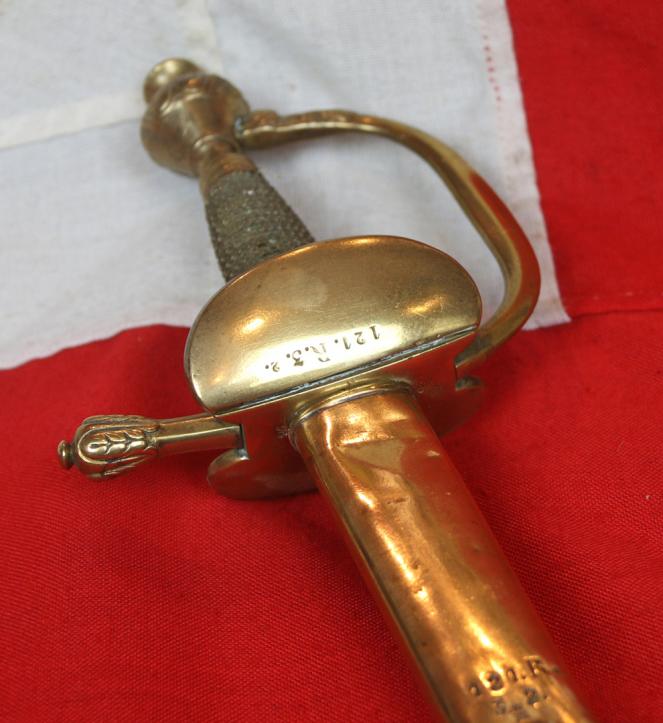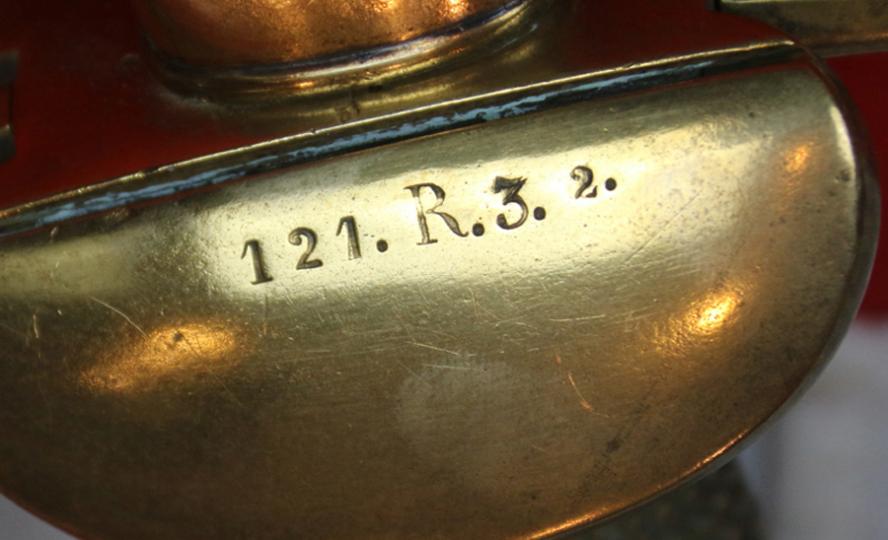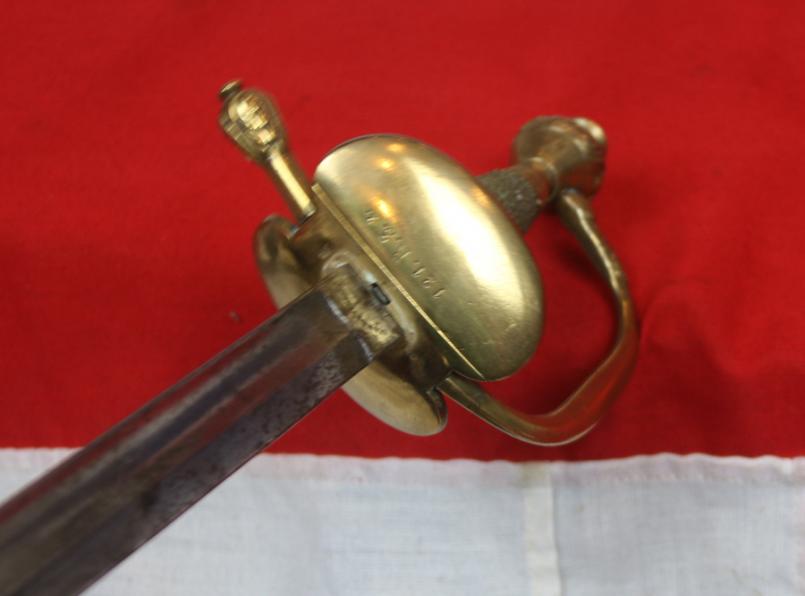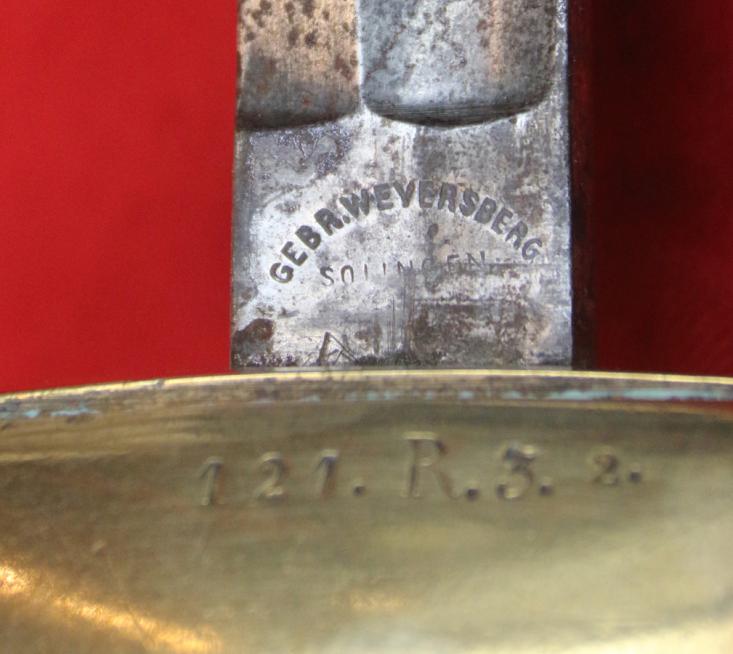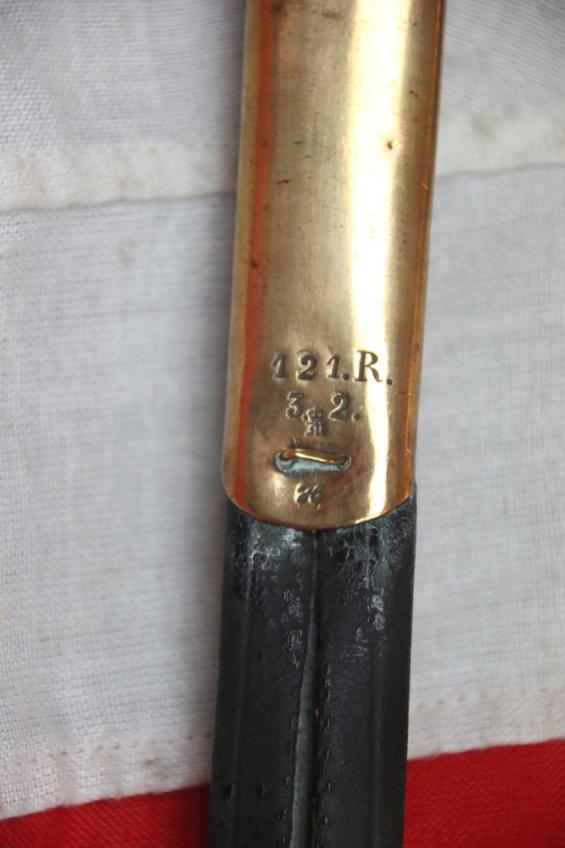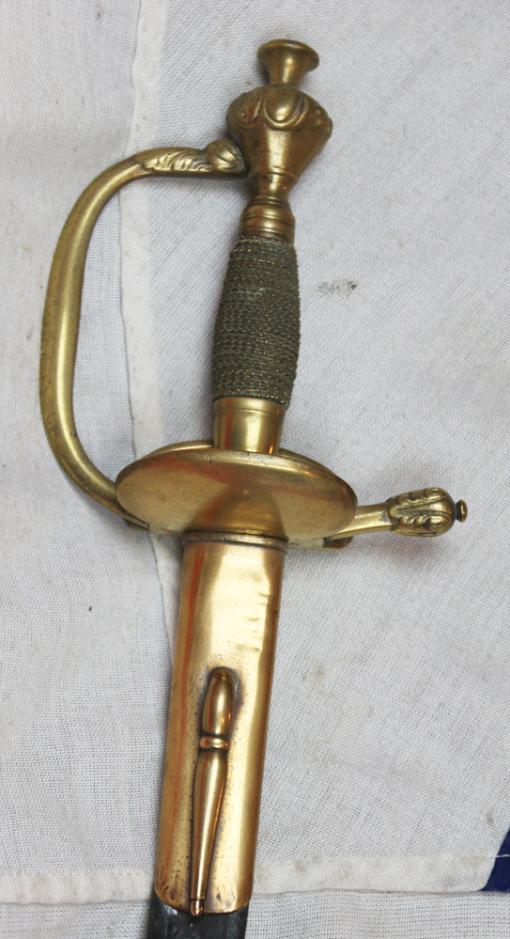A Scarce Pattern of Imperial German 121st infantry Officers Sword XIII Royal Wurtemberg Corps
Bronze hilt with folding guard. Overall very nice condition and beautiful regimental markings to hilt and scabbard. Made by Gebruder Wayersberg of Solingen. Scabbard bottom section lacking. Potentially used by a Wurttemberg officer who knew or fought with another Wurttemberg officer at the same time, Erwin Rommel. On mobilization in 1914, the corps was subordinated to the 5th Army and saw action on the Western Front. It was transferred to the 6th Army during the Race to the Sea. In October 1914, the corps headquarters formed Corps Fabeck, which by the end of the month had become a provisional army group, commanding XV Corps, II Bavarian Corps and Corps Urach. In November, the XIII Army Corps was transferred from the 6th Army to the 9th Army on the Eastern Front. By 1916, the corps had returned to the Western Front and was subordinated to the 4th Army under Army Group Crown Prince Rupprecht. From April 1917 to March 1918, the corps commanded Group Caudry, another provisional command. In September 1918, it took over command of Group Ebene under Army Group Duke Albrecht of Württemberg, and commanded Group Ebene until war's end.
It was still in existence at the end of the war in Armee-Abteilung C, Heeresgruppe Gallwitz on the Western Front.
Württemberg mountain battalion
In 1915 a Württemberg mountain battalion was also formed, on drafts from the Württemberg line regiments, which became a part of the Alpenkorps division in 1917. This was the unit in which the young Erwin Rommel distinguished himself on the Romanian and Italian fronts, winning the Pour le Mérite (Imperial German equivalent of the Victoria Cross) at the Batlle of the Isonzo in 1917. Erwin Rommel was undoubtedly one of the finest generals of the Second World War, his strategic mind and patient approach led his men to victory after victory early in the war. But, while his fame and glory came as a General and Field Marshal, it was as a Lieutenant in the First World War that he earned his greatest honor.
Rommel started out the war in command of a reserve artillery company but immediately transferred to the 124th Wurtemberg Infantry regiment. By the middle of August 1914, he was in contact with the French, and showed his daring and genius in combat. The II Battalion, to which Rommel’s platoon was attached, halted at Bleid, a small French farming town. They sent out scouting parties, testing the various hedgerows and farms for French resistance.
Taking just three men from his platoon Rommel advanced to the edge of the town, where they found 15 French soldiers taking a nervous breakfast in the dense fog. Rather than retrieving his full platoon and assaulting, Rommel gave the order to open fire, and this four man party scattered the French troops, killing 5 of them. After receiving a stiff bout of rifle fire in response, he and his men returned to their platoon, then advanced with the rest of the battalion.
Code: 23897
325.00 GBP



